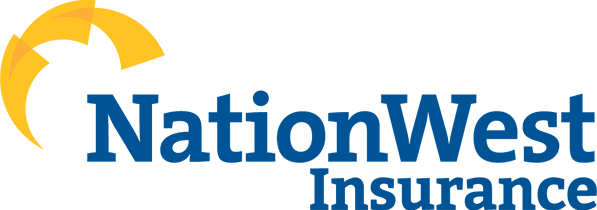
The Most Common Homeowner’s Insurance Claims
January 12, 2024
Wind & Hail Damage
Wind and hail damage make up a large portion of home insurance claims throughout the country. Windstorms and hailstorms can lead to fallen trees and branches; hail and objects picked up by the wind can damage windows, sidings, and other features of your home.
These tend to be fairly expensive claims; wind and hail damage will often cost over $10,000 to repair. Taking steps like trimming branches near your home can help reduce the risk of wind and hail damage.
Fire & Lightning
Fire and lightning damage claims are, unfortunately, fairly common; they’re also the most expensive claims most homeowners insurance policies will ever see.
Fire and lightning damage will often lead to a partial or total rebuild of the home. These claims can usually reach the coverage limits for both the property and personal belongings portions of a homeowner’s insurance policy.
You can protect yourself from fire and lightning claims; installing, maintaining, and regularly testing fire alarms is an excellent starting point.
Freezing & Water Damage
Freezing and water damage are extremely common; here in Winnipeg, homeowners have to deal with frozen pipes in the winter, sewer backup in the spring, and then the risk of flash floods in the summer.
Water damage can be extremely pricey—you might have to deal with mould remediation, damage to your home, and harm to your personal property. Here’s where things get tricky—a lot of water damage is not necessarily covered by your homeowner’s insurance policy.
Most homeowner’s insurance policies require you to purchase additional coverage for flood damage, sewer backup, and “dirty water damage”—damage from water that came from eavestroughs, pipes, drains, and septic tanks.
Things get even trickier when it comes to frozen pipes—they’re often covered if you’re at home every day, but they may not be covered if you go on vacation and no one comes to check on your property.
You can mitigate water damage by keeping your backwater valve and sump pump up to date, ensuring your pipes are insulated and warm in the winter, and regularly cleaning and maintaining drains, pipes, and other plumbing fixtures.
Burglaries & Theft
The frequency with which you see burglaries, theft, and vandalism depends, in large part, on where you live. You can check which property crimes are most common in a given area; some neighbourhoods may be prone to car-related thefts, while others may be vulnerable to broken windows or stolen packages.
These homeowner’s insurance claims tend to be less expensive than many of the other claims. This creates an interesting scenario where the average claim for burglary, theft, or vandalism may be low enough that it does not reach the deductible or isn’t worth losing a no-claim discount.
The result? It’s possible that there are far more burglaries, thefts, and vandalisms than homeowners claim on their insurance policies—claiming simply isn’t worth it. It’s always important to consider your home insurance premiums and deductible before making a claim.
You can decrease the risk of these crimes by installing security systems like alarms and doorbell cameras. You should also ensure that someone visits your home every day, preferably at varying times, when you’re away.
Miscellaneous Property Damage
Most other property claims fall under what we might consider miscellaneous property damage. Cargo falls from a jet plane onto your house. A giant sinkhole appears and swallows your garage. Let your imagination run wild—all sorts of strange stuff can damage your property.
These types of claims are surprisingly uncommon, given that they encompass “every type of property damage we haven’t talked about”. What can we say? Homeowner’s insurance companies are excellent at tracking what hazards cause homeowners to make claims.
We’d love to give you tips on how to stop miscellaneous damage, but it’s not as clear-cut. Inspect your home regularly for any abnormalities—you never know what you might catch.
Liability Claims & Medical Payments
Liability insurance is part of your homeowner’s insurance coverage—it may cover you if you accidentally damage someone’s property or injure someone. Your homeowner’s insurance liability policy may also cover you if someone is injured on your property; a good example of this is when someone slips on ice and injures themselves on your sidewalk.
Liability claims are quite expensive, which is why it’s a good thing they’re among the least common claims—they’re rarer than all of the property damage categories we’ve listed. You may have to pay to cover property damage claims, medical bills for bodily injury, and more. These claims often include legal fees and add up to tens of thousands—or even hundreds of thousands—of dollars.
You can reduce your risk of needing to file a liability claim by ensuring that your property is safe for anyone who steps onto it. Clear snow and ice, and place signs to alert people of potential hazards.
Conclusion
Now that you know the most common homeowner’s insurance claims —and you have tips on how to mitigate the risk of those claims—we recommend reviewing your homeowner’s insurance policy. Doing so can help you understand what coverages you have and whether or not you need to purchase additional coverages or increase coverage limits.
Our insurance brokers can help. When you need insurance in Winnipeg, the team at Nation West is here to help you understand your policy—and find policies that are best suited to your needs.

